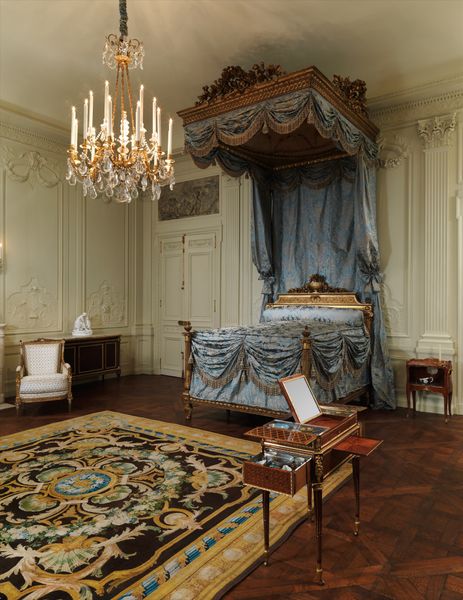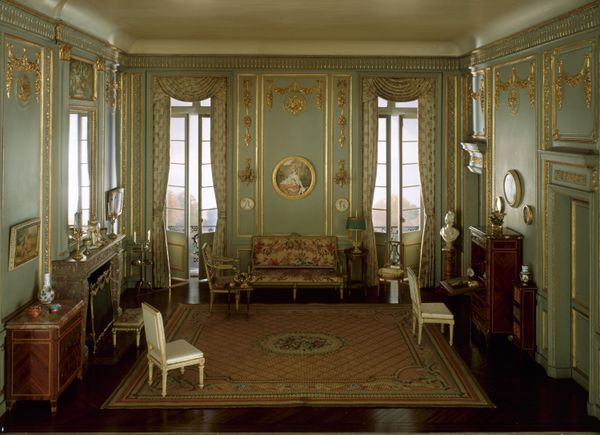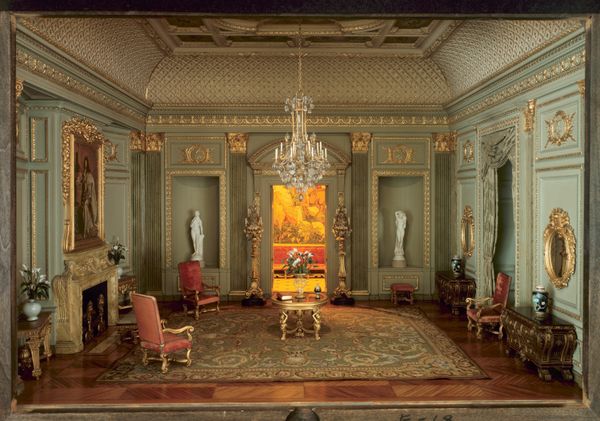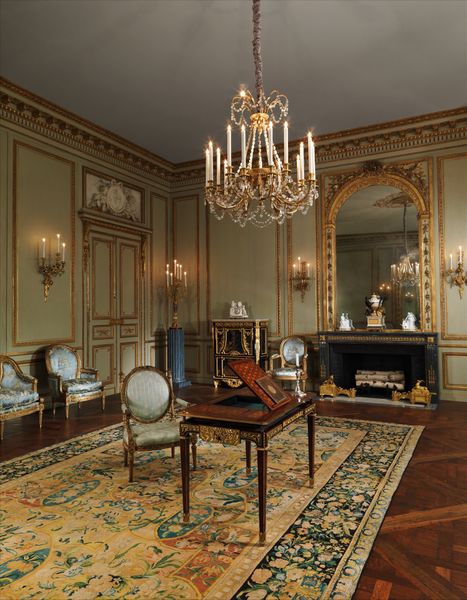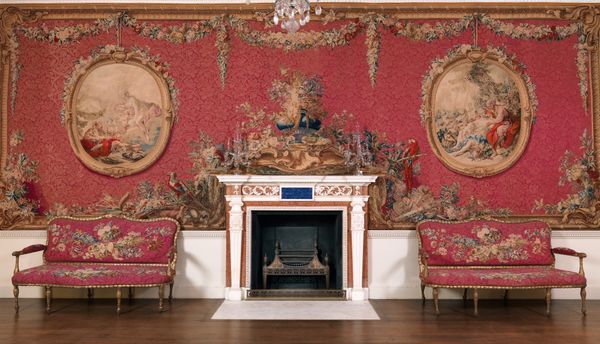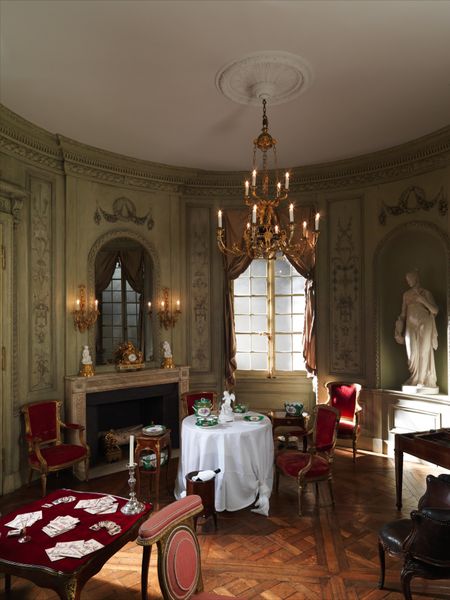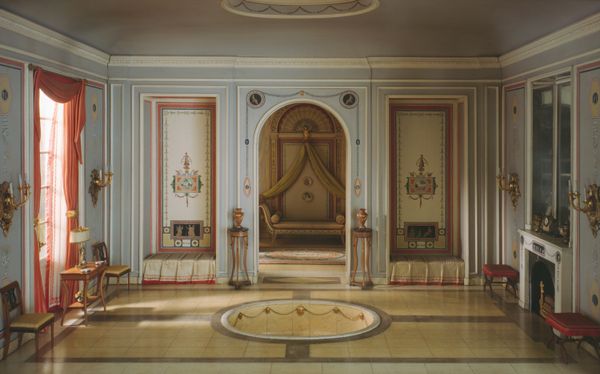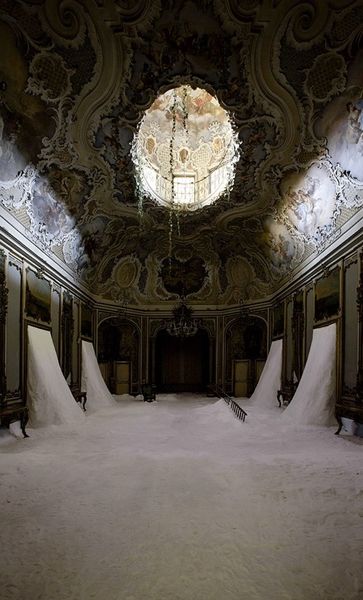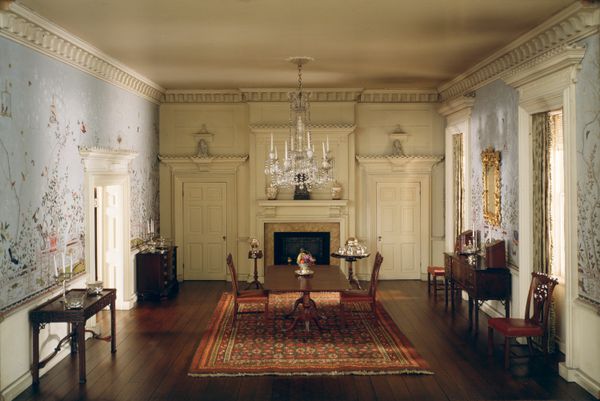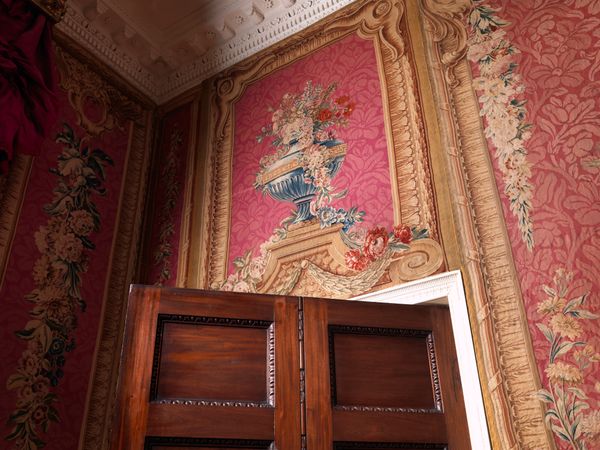
photography, architecture
#
neoclacissism
#
landscape
#
architectural photography
#
historic architecture
#
traditional architecture
#
photography
#
decorative-art
#
architecture
Copyright: Rijks Museum: Open Domain
This is Abraham van der Hart's 'Haarlem reception room', painted in 1794. The composition is defined by a strong sense of symmetry and balance, with a central vanishing point drawing the eye into the depth of the room. The interplay of light and shadow is carefully managed, creating a serene atmosphere. The muted palette of grays, creams, and golds lends an air of understated elegance. The room's structure, with its ornate moldings and carefully placed furniture, speaks to a deeper societal order and the values of the time. The architectural rendering and furnishings reflect the Enlightenment ideals of reason, order, and the harmonious arrangement of space. The geometric patterns in the rug and the classical motifs in the ornamentation are visual signs pointing to a worldview steeped in tradition and a desire for clarity and control. Yet, the painting's formal elements also hint at the tensions between the private world of the elite and the looming social changes of the late 18th century.
Comments
rijksmuseum about 2 years ago
⋮
This room was built and furnished for Willem Philip Kops, a merchant and art collector, as an addition to his house at 74 Nieuwe Gracht in Haarlem. With the exception of the original stucco ceiling, the room survives virtually intact. Abraham van der Hart, the city architect of Amsterdam, succeeded in creating a harmonious, classicizing entity, in which all the parts are in tune with one another. He must have been assisted by a specialized firm of upholsterers, which ordered the furnishings and coordinated the installation. The chimneypiece probably came from Italy, the carpet from the Flemish city of Tournai, the furniture from Amsterdam, the silk hangings and upholstery from Lyon in France and the glass chandelier and candelabra from England. The room was most likely used only for formal evening receptions.
Join the conversation
Join millions of artists and users on Artera today and experience the ultimate creative platform.

